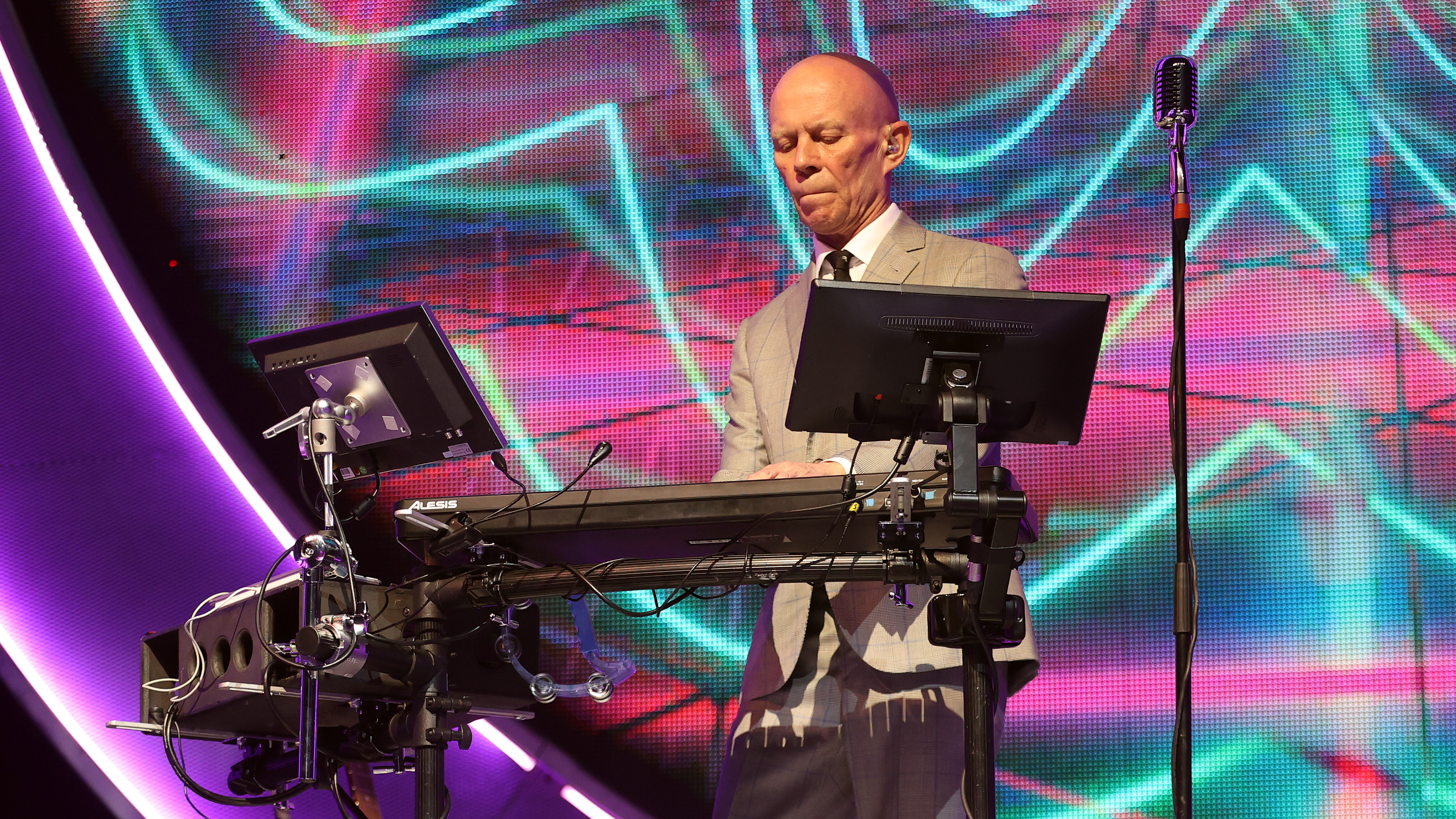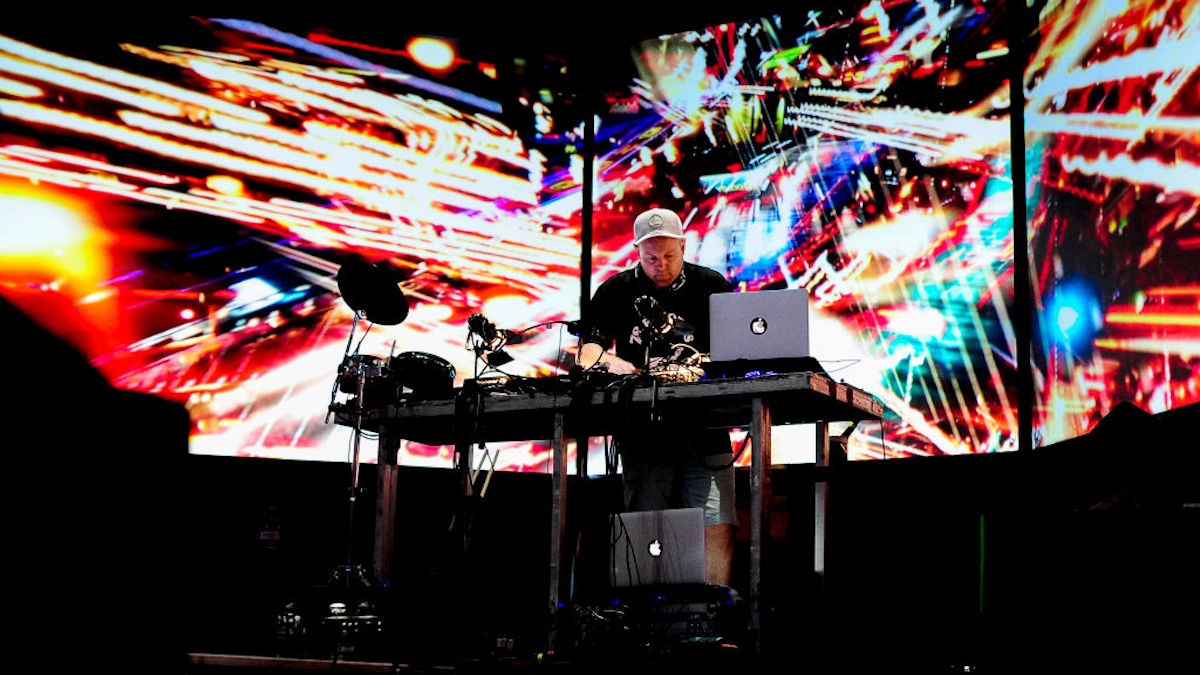"I just pressed a key and it made that famous Moog sound": 5 times when one piece of studio gear defined an artist's career
Five musicians whose careers were forever altered by picking up one fateful bit of kit

As you can probably tell, we love gear at MusicRadar, almost as much as we love music. To be honest we’re not even sure if we make music because we love music, or just because we like tinkering with the gear.
But either way, as much as we love it, we can't really say that our careers and lives have been defined by music gear. Not quite, anyway. Which is more than can be said for the following artists.
In each one of their lifetimes, these musicians have had an encounter – usually unplanned – with a particular piece of studio equipment where everything changed. Where their future paths were altered, where their music lives got diverted and their musical output was redefined.
Ladies and gentlemen, welcome to the five times when gear created an artist.
Yazoo/The Assembly/Erasure and the Roland MC-4
He thought 'hang on a second, I don't need a band now, I can do it with this sequencer'
Daniel Miller on Vince Clarke
School friends Vince Clarke and Andy Fletcher formed the band No Romance in China in 1977, which morphed into Composition of Sound with the addition of Martin Gore in 1980. After singer Dave Gahan completed the band’s lineup and they became Depeche Mode, the rest was set to be history, especially with initial singles New Life and Just Can’t Get Enough and debut album Speak & Spell all scoring chart success.
Clarke though, had other ideas. Never really enjoying life in a band, he was given some extra confidence to turn his back on this potentially lucrative future with a single piece of equipment, a Roland MC-4. It would not only change his fortunes, but ultimately those of Depeche Mode, as he then left the band.

Manager, mentor and Depeche Mode label owner Daniel Miller told Classic Pop magazine: “I think Vince found the concept of having to agree on everything with three other people challenging. He's not a confrontational person. Very early on in the Depeche days, he was really hungry to learn about synthesisers and the studio.
Want all the hottest music and gear news, reviews, deals, features and more, direct to your inbox? Sign up here.
"One of the reasons that maybe pushed him over the edge to leave Depeche was the invention of the digital sequencer, the Roland MC-4, which he really embraced, got it really quickly and figured it out. He thought 'hang on a second, I don't need a band now, I can do it with this'. ”
After Clarke left the band he realised he did still require a singer though, and through various front people – namely Feargal Sharkey, Alison Moyet and Andy Bell – found huge success with The Assembly, Yazoo and Erasure respectively.
Likewise Depeche Mode have enjoyed over 40 years of success too, both acts thriving separately, and all thanks to an old Roland sequencer.

DJ Shadow and the Akai MPC60
DJ Shadow (aka Joshua Paul Davis) was inspired by his father’s collection of Isaac Hayes, ELO and Three Dog Night records as he grew up, but wanted to somehow mix these influences with his new love of hip hop. When he heard Public Enemy sample Isaac Hayes for their track Black Steel in the Hour of Chaos, he realised that sampling was his way forward as a music producer.
I definitely set out to do an entirely 100% sample-based album. That was my mission
DJ Shadow on Entroducing
Via an early E-mu sampler he started lifting snippets, breaks and sounds from a huge variety of genres, but it wasn't until he got an Aka MPC60 that he fully developed his sampling skills.
"I pooled all my money, went down to the Guitar Center in San Francisco and bought the Akai MPC60," he told the Guardian in 2022. "When anybody buys an instrument, they always say that they go home and stay awake for two and a half days, just playing. That’s exactly what I did."

Davis soon realised he had enough technology at his fingertips to realise his dream: a totally sample-based album.
"By the end of the nineties, most hip hop artists were barely using samples at all," he told Westworld.com. "By '95, when I was really working on Endtroducing, I was very much trying to make a statement about, ‘Why are we all abandoning this art form?’"
He told Keyboard Magazine: “I definitely set out to do an entirely 100% sample-based album. That was my mission.”
The resulting album, Endtroducing, is one of the most groundbreaking releases of the last four decades, a record that inspired new generations of samplists.
It might not have been the most hi-fi of recordings (Shadow has admitted, “I didn’t understand how to mix music back then”), but Entroducing was the totally-sampled album that Shadow set out to record and defined his career, as did the Akai at the centre of it.

Gary Numan and the Minimoog
In the late 1970s Gary Numan was having some middling success with punk band Tubeway Army, and just about to enter the studio to record the band's self-titled debut album. But…
“I’d just been signed and I’d written all of these punk songs but my heart wasn’t really in it,” he told The Quietus.
I just pressed a key for whatever it was set on, and it made that famous Moog sound
Gary Numan
Fortunately – and that word is used with some understatement – there was a Minimoog synthesiser set up in the corner of the studio in which Tubeway Army were recording. Numan's inner geek was notified and he decided to play a couple of notes.
"I just pressed a key for whatever it was set on, and it made that famous Moog sound, that famous low growl and the room vibrated,” recalled Numan. “It was the most powerful thing. It was like an earthquake and I just loved it."

That decision would end up kickstarting synth pop and change Numan's career forever.
He decided to replace some of the guitar parts of future songs with synth parts. It wasn’t enough to change the band’s debut from a more guitar-based format, but Numan quickly changed the plan for the follow up album, Replicas, which became more synth-based and also featured his breakthrough No 1 hit Are Friends Electric?
It was the first synth-pop hit in the UK and after that Numan dropped the band, became a solo artist and adopted the synth as the main sound for his first few albums.
40 years later he is still making electronic music – albeit with a darker twist – and very much enjoying another successful chapter in a long career. Would it have all have happened without the Mini?

Art of Noise and the Fairlight CMI
In 1983 the early Fairlight CMI sampler was only used by those that could afford its 'small house' price tag, and those who'd put the hours in learning how to get the best from it.
Luckily for programmer J. J. Jeczalik, he'd already done the hard graft, getting to grips with a Fairlight, when he was called in by Trevor Horn to make it do the business for him.
While working on the Trevor Horn-produced Yes album, 90215, engineer Gary Langan got J.J. to load in an unused Alan White drum track into the Fairlight and after an evening spent messing around with the drum loop and a bunch of other samples, Art of Noise was accidentally born.
After keyboardist Anne Dudley added some melodies, the track Close (to the Edit) would eventually be the result, a huge hit in late 1984.
Art of Noise would go onto score other hits including a cover of Prince's Kiss with Tom Jones, but the band's biggest legacy would be introducing the more creative side of sampling to the masses and championing a DIY music production ethos that is still with us today.
The Fairlight made Art of Noise, and Art of Noise, in many ways, proved you don't need to read notes or be a classically trained musician to make music. (And fortunately you don't need a sampler that costs the price of a house any more either.)
Wendy Carlos and Moog
We'll finish with Wendy Carlos, and while others here might, to a greater of lesser extent, have had their careers shaped by a piece of gear, Wendy helped shaped the gear we use, as well as using it to her advantage.
Carlos became the ultimate composer, engineer, inventor and genre-creator
Gary Numan
Carlos was based in New York working as a mastering engineer and had always had compositional aspirations despite studying as a physicist. She struck up a friendship with Bob Moog after meeting him at an Audio Engineering Society show in the city and this led to a marriage of both her passions: music and technology.
Carlos started advising Moog about his fledgling Moog Modular system and as payment for composing promotional music for Moog, ended up with a modular system with which she recorded the seminal album Switched on Bach.
Carlos created Moog-based versions of famous Bach compositions using an incredibly intricate and time-consuming recording process, but the finished album not only ended up being the best promotion Moog could have wished for, but went double platinum in the States, launching a Carlos career that would last for decades.

Moog, of course, went onto create the MiniMoog, the first all-in-one and proper commercially available synthesiser that would be championed by Kraftwerk and many others (including some of our entries here).
Carlos, meanwhile, would go onto pretty much invent ambient music with the 1972 release Sonic Seasonings, before becoming a successful film score composer with soundtracks to both A Clockwork Orange and Tron.
Whether Moog would have had such a successful launch without Carlos is doubtful, and certainly her career was shaped by her early use of the Moog machines. So where would one be without the other?
Perhaps we should just call it as the ultimate hi-tech symbiotic relationship where both parties benefitted. Moog became the must-have brand in music production and Carlos became the ultimate composer, engineer, inventor and genre-creator.



Andy has been writing about music production and technology for 30 years having started out on Music Technology magazine back in 1992. He has edited the magazines Future Music, Keyboard Review, MusicTech and Computer Music, which he helped launch back in 1998. He owns way too many synthesizers.
